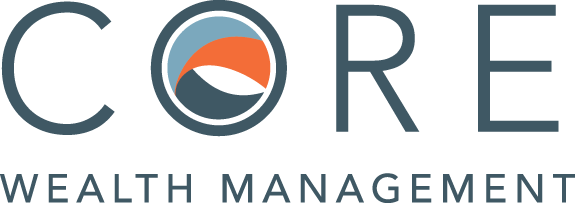
As the market accepted the reality of higher interest rates, a likely recession, and heightened uncertainty, both equity and bond markets continued their decline. Below are the asset class returns for 3Q of 2022.

The news media would like us to believe that these declines are the result of a world spinning out of control. While uncertainty is surely a factor, the real story is much less exciting.
It is useful to remember what we are buying when we buy a portfolio of stocks and bonds – a stream of future cash flows purchased at a discount. Keeping that in mind, the cause of the 2022 market decline can be traced back to two factors:
- First, the expectations of future cash flows are lower (and less certain) now than they were at the beginning of the year. For example, last December, the S&P 500 was expected to earn $223/share for 2022, and $245 per share of 2023. Today, that estimate is $208 for 2022 and $222 for 2023 (Source: Refinitiv’s S&P 500 Earnings Scorecard).
- Second, as rates on risk free investments such as CDs and Treasury Bills have increased, the opportunity cost of investing in risky assets has increased. As a result, investors require a bigger discount when purchasing stocks and bonds.
Stated another way, lower-than-expected earnings and higher interest rates have resulted in a downward adjustment in asset prices, which in turn will yield higher returns going forward. Meanwhile, the companies we invest in continue to earn profits, the bonds we invest in are still paying interest, and we as investors continue to collect both. It may not be an exciting story, but it’s much more realistic than most of what you will see on the news or see online.
Also not mentioned by the news media is some of the good news, including:
- Despite backwards looking inflation data being higher than anything we have seen in 40 years, inflation expectations continue to moderate. The 5 and 10-year “breakeven rates”, which reflect what the market expects inflation to be over the next five to ten years, have both settled in at around 2.5% (Source: Federal Reserve Bank of St. Louis).
- Yields on fixed income investments continue to rise, including the “real yield”, which is the interest paid on Treasury bonds in excess of expected inflation. Real yields have averaged approximately 0.3%, over the last decade and it was not uncommon for it to be negative. Today, that number is up to 1.6%. In other words, investors can finally expect to earn a return above inflation on their savings accounts, CDs and other risk-free/low risk assets. (Source: Federal Reserve Bank of St. Louis).
- Stock valuations are much more attractive than they were at the beginning of the year. At the beginning of 2022, the forward Price-to-Earnings (“P/E” ratio) on US stocks was well above 20x and the P/E ratio on non-US stocks was above 15x1. Today, the P/E on US Stocks is 16x, and the P/E on non-US stocks is about 11x. This means that the price you pay per dollar of earnings is lower now than it was in the beginning of the year.
- Earnings are expected to grow over the next 12 months at a rate of about 7% for US stocks and 5% for non-US stocks (Source: Clearnomics).
No doubt it’s been a challenging year, but as you can see there are some bright spots on the horizon. But if you are still unsure, may we suggest this exercise. The next time you visit a store, shop online or watch your favorite streaming service, notice how companies are adapting and innovating and creating. Notice how the good ones are relentlessly striving to deliver value to their customers and take market share away from companies that are failing to do so. These companies are encountering all kinds of challenges and obstacles but are working tirelessly to overcome them.
Then remember that the profits that these companies earn will eventually get delivered to you. After all, you own these companies. It is these profits that are the source of the returns that will help you achieve your long-term goals.
By looking beyond the numbers on a screen or a monthly statement and shifting the focus to what investing is really about, it just might help all of us be a little more confident about the future.

